In Southeast Alaska, massive trees tower over bear dens, cradle eagle nests, and fortify streambanks. These ancient trees of the Tongass National Forest are also highly valued for their wood, and the Forest was logged extensively from the mid-1900s to early 2000s. After a clearcut, seeds in the mossy soils quickly sprout into dense forests of skinny trees that take centuries to return to large, well-spaced “old-growth” conditions.
The level of industrial old-growth logging has decreased, and the Tongass National Forest is now home to swaths of young stands. The remaining old-growth stands are in culturally valuable places for Indigenous tribes and communities, are difficult to access, or are too ecologically sensitive to harvest.
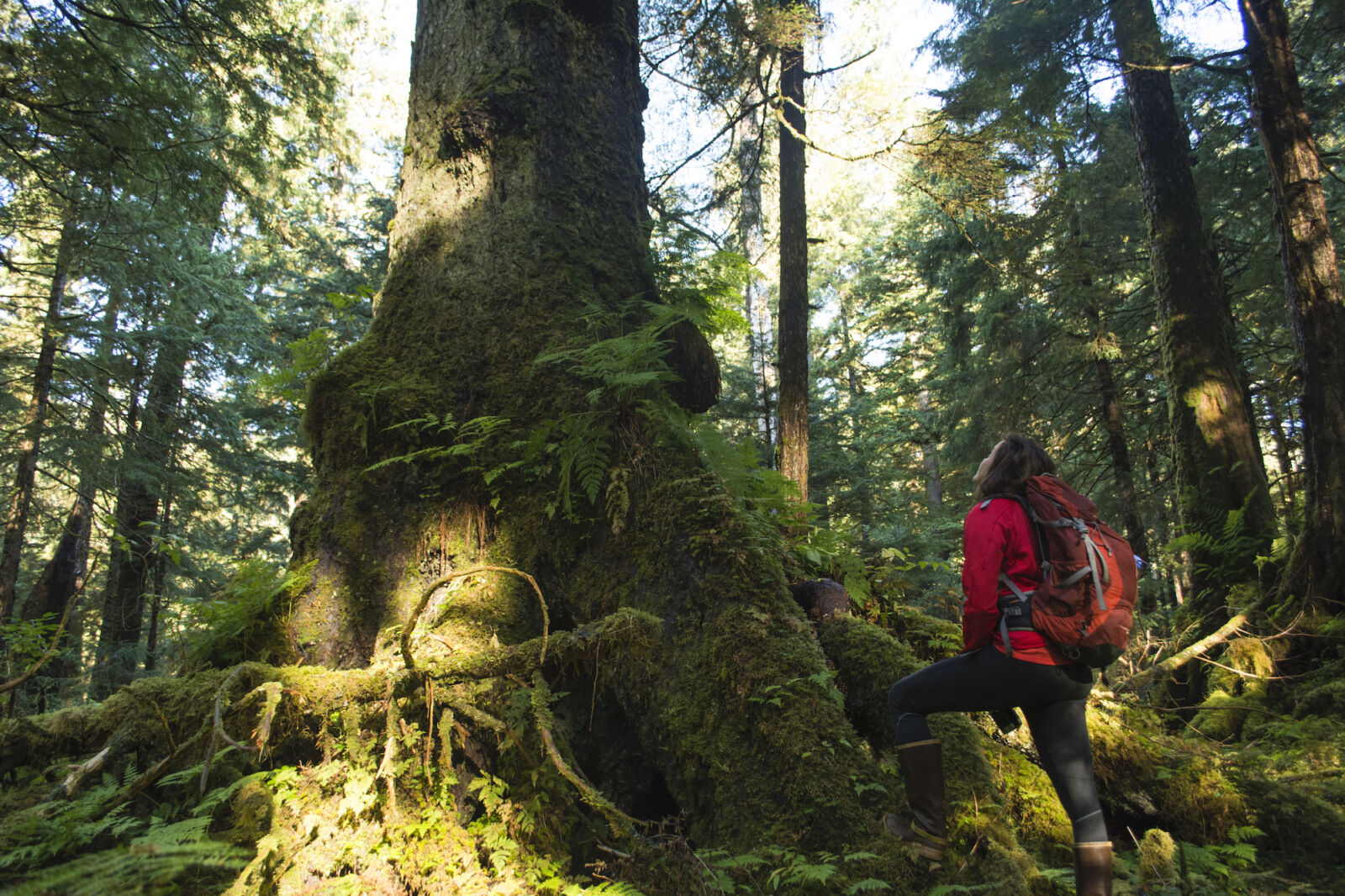
Photo by Lione Clare/SCS
Old-growth forests let light sunlight filter in, nourishing understory plants that are important food for deer. It’s also easy for all kinds of animals to navigate these well-spaced groves.
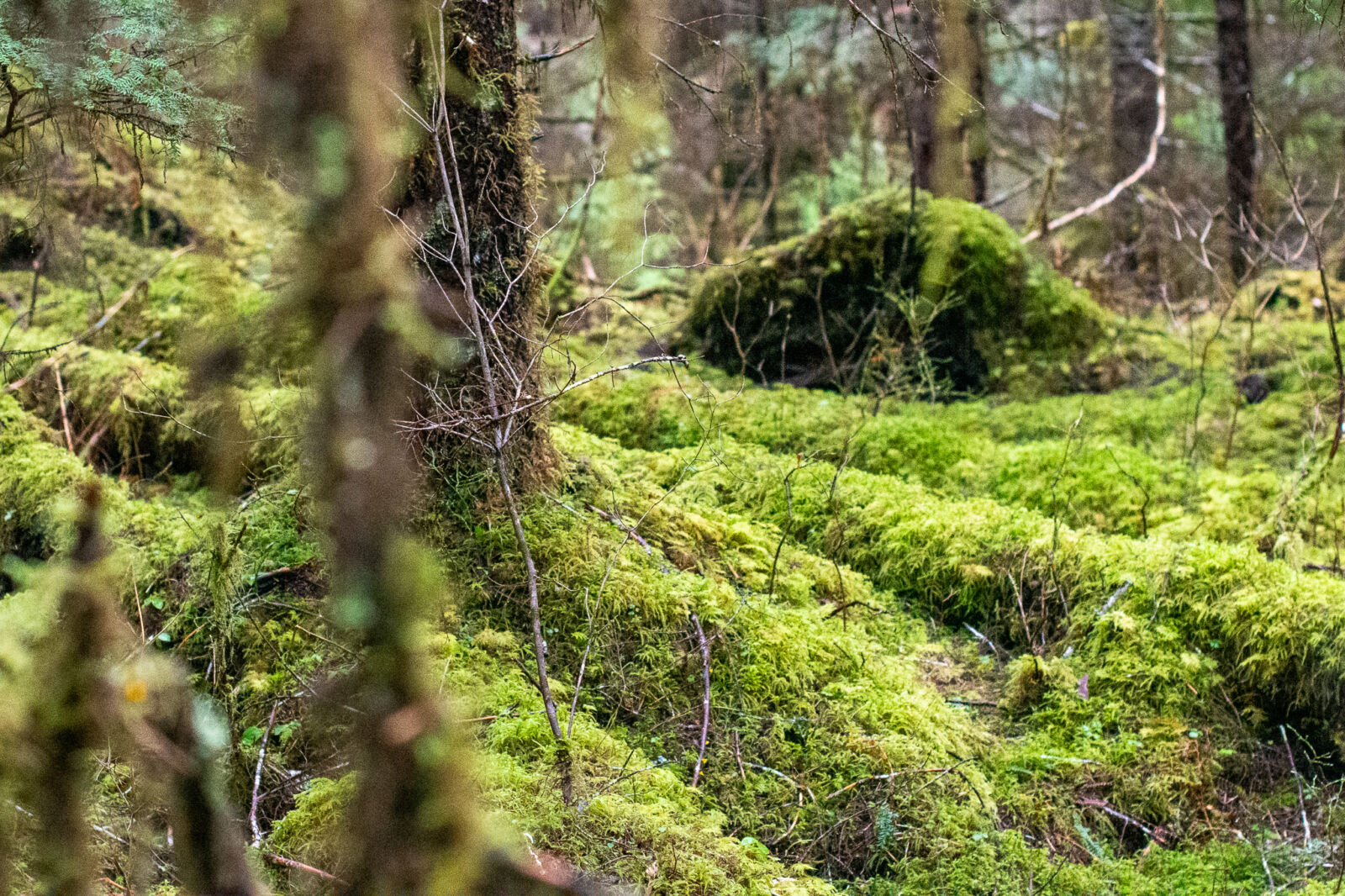
Photo by Carolyn Rice
Pre-commercial thinning speeds the growth of young-growth forests into commercially viable timber by reducing competition between trees. It also makes young forests more habitable for wildlife; the spacing allows understory growth.
Faced with these factors and a continued desire for wood products, the U.S. Forest Service and timber operators decided in 2016 to transition to predominately young-growth timber harvest over 10 years. It’s not just a different forest product; the “Tongass Transition” also marks an increased effort to work with local communities.
The Tongass Transition Collaborative, supported by a Community Capacity and Land Stewardship grant from the National Forest Foundation, was created to ensure stakeholders are involved as the Tongass implements the Transition. Members include native corporations, local and national nonprofit organizations, and local businesses.
"The group’s contributions have been invaluable to the USDA Forest Service as we seek to address the diverse interests of forest users while managing their public lands,” said Jason Anderson, Tongass staff officer. “The TTC recognizes what the Tongass National Forest means for Southeast Alaska and its link to the social and economic fabric of life in rural communities.”
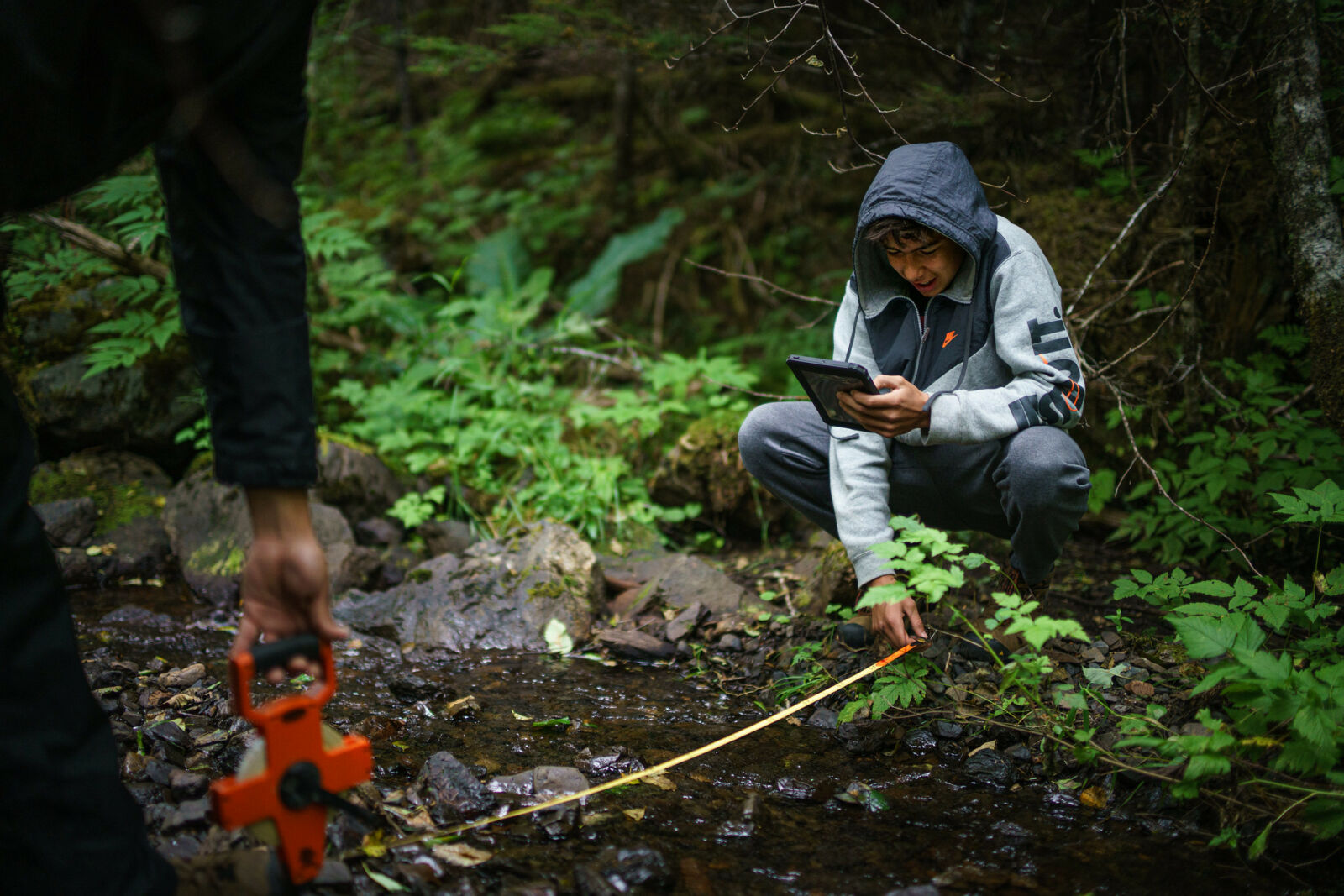
Photo by Bethany Goodrich/Sustainable Southeast Partnership
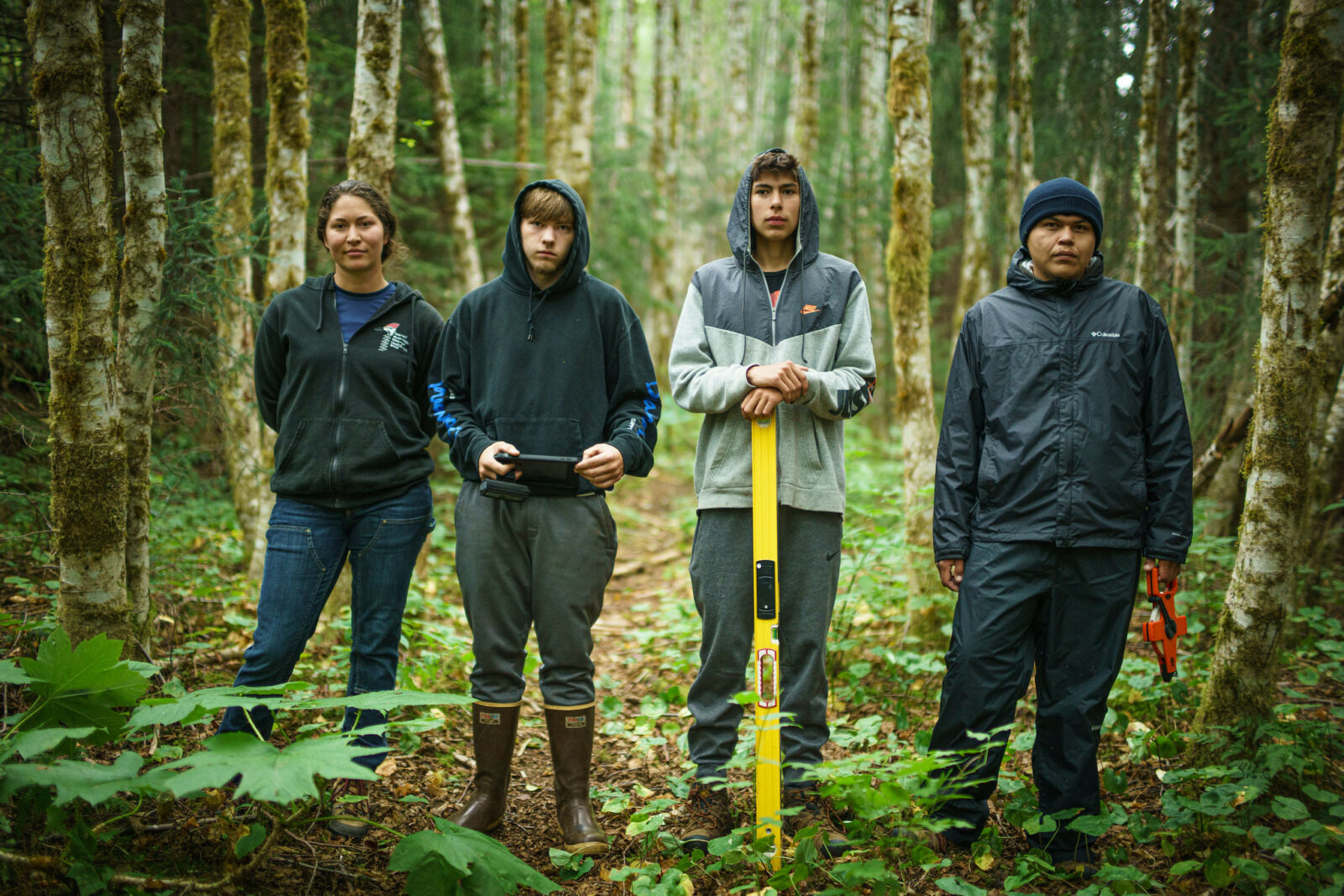
Photos by Bethany Goodrich/Sustainable Southeast Partnership
Members of the Keex’ Kwaan Community Forest Partnership field crew survey the forests and streams surrounding Kake, AK
The Collaborative has facilitated 3 Young-Growth Symposia to identify needs and solutions for the Tongass Transition among stakeholders and across leadership levels. One product of those meetings is the Tongass Young Growth Inventory, which catalogs the extent and quality of young-growth stands across the Forest.
The most recent symposium was held in November 2019. At that moment in time, the Tongass was in international headlines for the proposed rollback of the Roadless Rule in Alaska. Even so, said Andrew Thoms, co-chair of the Collaborative, “When we came together and saw the big picture, everyone came away really excited about the ongoing initiatives and future opportunities to do multiple resource management on the Tongass.”
The Collaborative encourages the Tongass to do this management in a way that benefits the environment, people, and the economy all at once. Often, environmental needs intersect with the interests of rural Southeast Alaskan residents, who thrive on the resources provided by their surrounding lands and waters. Initiatives like the Keex’ Kwaan Community Forest Partnership bring together land managers and community stakeholders to meet the needs of rural areas. Another example is the Training Rural Alaskan Youth Leaders and Students program, which gives youth the opportunity to do stream restoration and other projects on their surrounding lands.
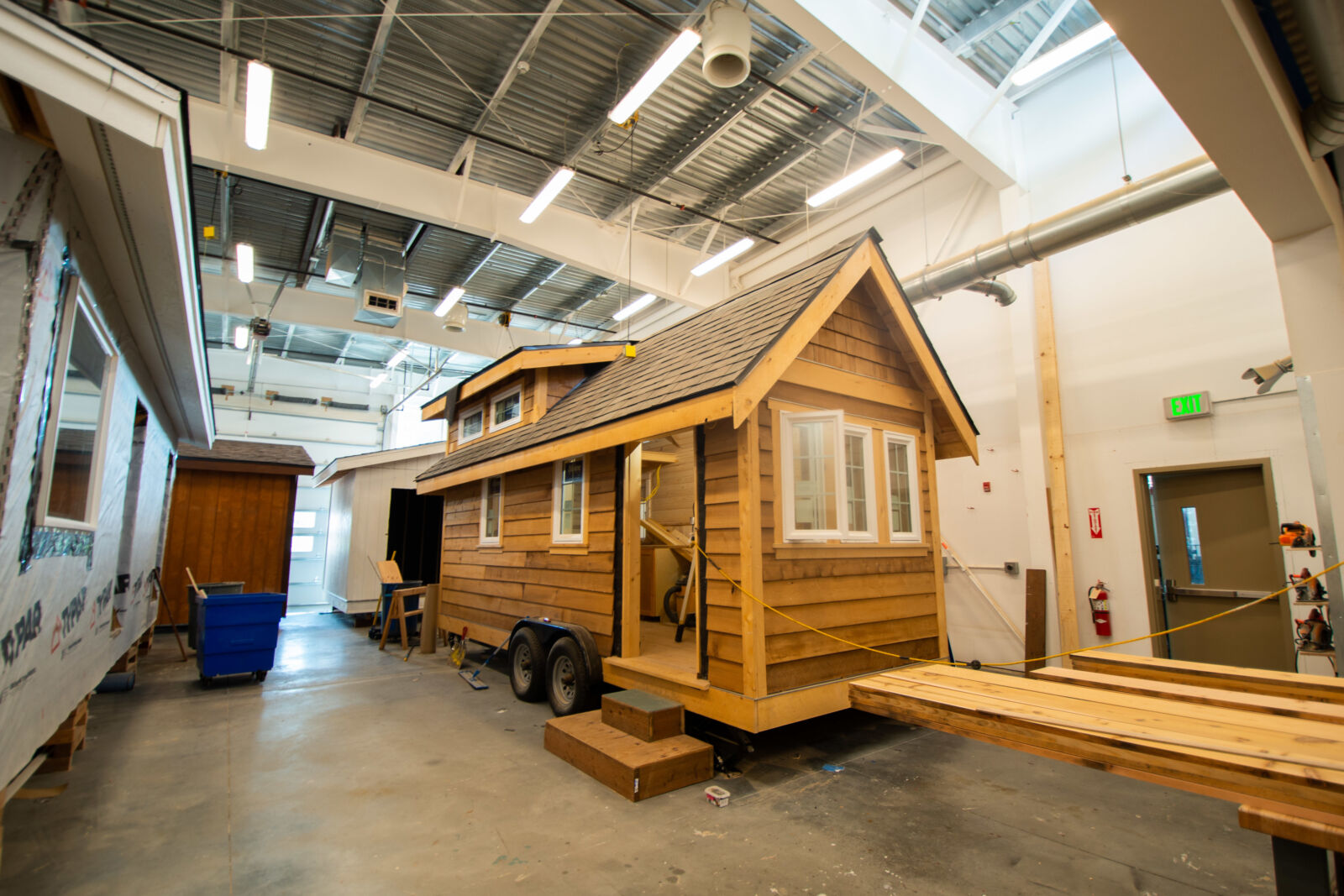
Photo by Amelia Milling/SCS
Part of the Tongass Transition is building local interest in and capacity to use young-growth wood. Sitka High School students built the “Tongass Tiny Home” out of locally sourced young-growth planks in a construction class.
“People from Southeast Alaska know these lands better than anyone else,” said Laurel Stark, Program Manager for Workforce Development at Spruce Root, Inc. “By investing in people, these collaborative workforce development programs are strengthening the next generation of stewards and community leaders.”

